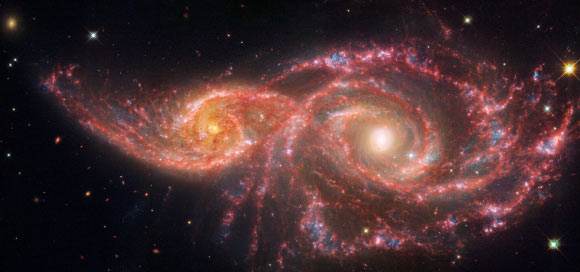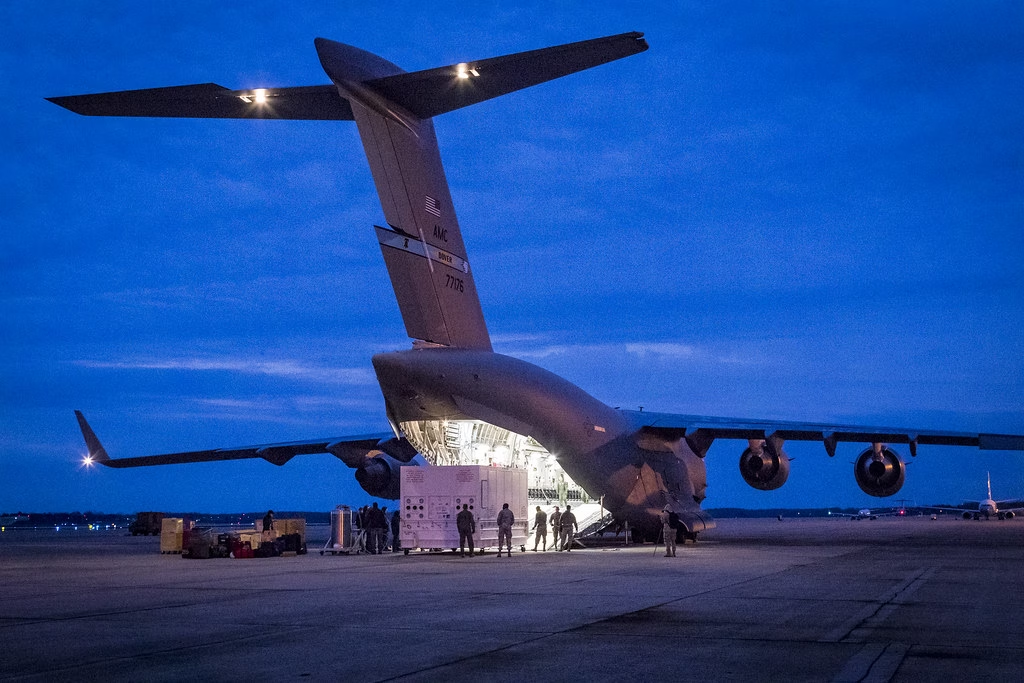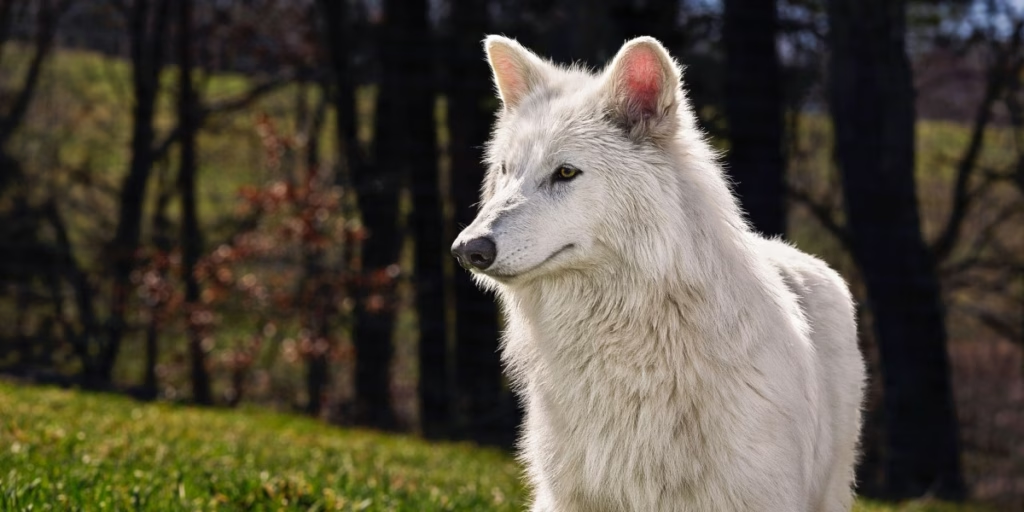NASA Telescopes Capture Stunning Galaxy Duo

NASA Space Technology
NASA has released a beautiful composite image taken by the NASA/ESA Hubble Space Telescope and the NASA/ESA/CSA James Webb Space Telescope of a pair of two overlapping spiral galaxies: IC 2163 and NGC 2207.

This composite image shows IC 2163 (left) and NGC 2207 (right) galaxies. Image credit: NASA / ESA / CSA / STScI.
The IC 2163-NGC 2207 pair is located around 114 million light-years from us in the direction of the constellation of Canis Major.
The larger and more massive galaxy is cataloged as NGC 2207, and the smaller one is IC 2163.
Strong tidal forces from the former have distorted the shape of the latter, flinging out stars and gas into long streamers stretching out a hundred thousand light-years.
IC 2163 is swinging past NGC 2207 in a counterclockwise direction, having made its closest approach 40 million years ago.
However, IC 2163 does not have sufficient energy to escape from the gravitational pull of NGC 2207, and is destined to be pulled back and swing past the larger galaxy again in the future.
“The pair’s macabre colors represent a combination of mid-infrared light from Webb with visible and ultraviolet light from Hubble,” NASA astronomers said.
“Look for potential evidence of their light scrape in the shock fronts, where material from the galaxies may have slammed together.”
“These lines represented in brighter red, including the eyelids, may cause the appearance of the galaxies’ bulging, vein-like arms.”
“The galaxies’ first pass may have also distorted their delicately curved arms, pulling out tidal extensions in several places.”
“The diffuse, tiny spiral arms between IC 2163’s core and its far left arm may be an example of this activity.”
“Even more tendrils look like they’re hanging between the galaxies’ cores.”
“Another extension drifts off the top of the larger galaxy, forming a thin, semi-transparent arm that practically runs off screen.”

These images shows two overlapping spiral galaxies, IC 2163 and NGC 2207. Hubble’s ultraviolet- and visible-light observation is at left, and Webb’s mid-infrared light observation is at right. Image credit: NASA / ESA / CSA / STScI.
IC 2163 and NGC 2207 have high star formation rates, like innumerable individual hearts fluttering all across their arms.
Each year, these galaxies produce the equivalent of two dozen new solar-mass stars.
“Our Milky Way Galaxy only forms the equivalent of two or three new Sun-like stars per year,” the astronomers said.
“Both galaxies have also hosted seven known supernovae in recent decades, a high number compared to an average of one every 50 years in the Milky Way.”
“Each supernova may have cleared space in their arms, rearranging gas and dust that later cooled, and allowed many new stars to form.”
“To spot the star-forming action sequences, look for the bright blue areas captured by Hubble in ultraviolet light, and pink and white regions detailed mainly by Webb’s mid-infrared data,” they said.
“Larger areas of stars are known as super star clusters.”
“Look for examples of these in the top-most spiral arm that wraps above the larger galaxy and points left.”
“Other bright regions in the galaxies are mini starbursts — locations where many stars form in quick succession.”
“Additionally, the top and bottom ‘eyelid’ of IC 2163, the smaller galaxy on the left, is filled with newer star formation and burns brightly.”
Discover more from Tamfis Nigeria Lmited
Subscribe to get the latest posts sent to your email.



 Hot Deals
Hot Deals Shopfinish
Shopfinish Shop
Shop Appliances
Appliances Babies & Kids
Babies & Kids Best Selling
Best Selling Books
Books Consumer Electronics
Consumer Electronics Furniture
Furniture Home & Kitchen
Home & Kitchen Jewelry
Jewelry Luxury & Beauty
Luxury & Beauty Shoes
Shoes Training & Certifications
Training & Certifications Wears & Clothings
Wears & Clothings
















